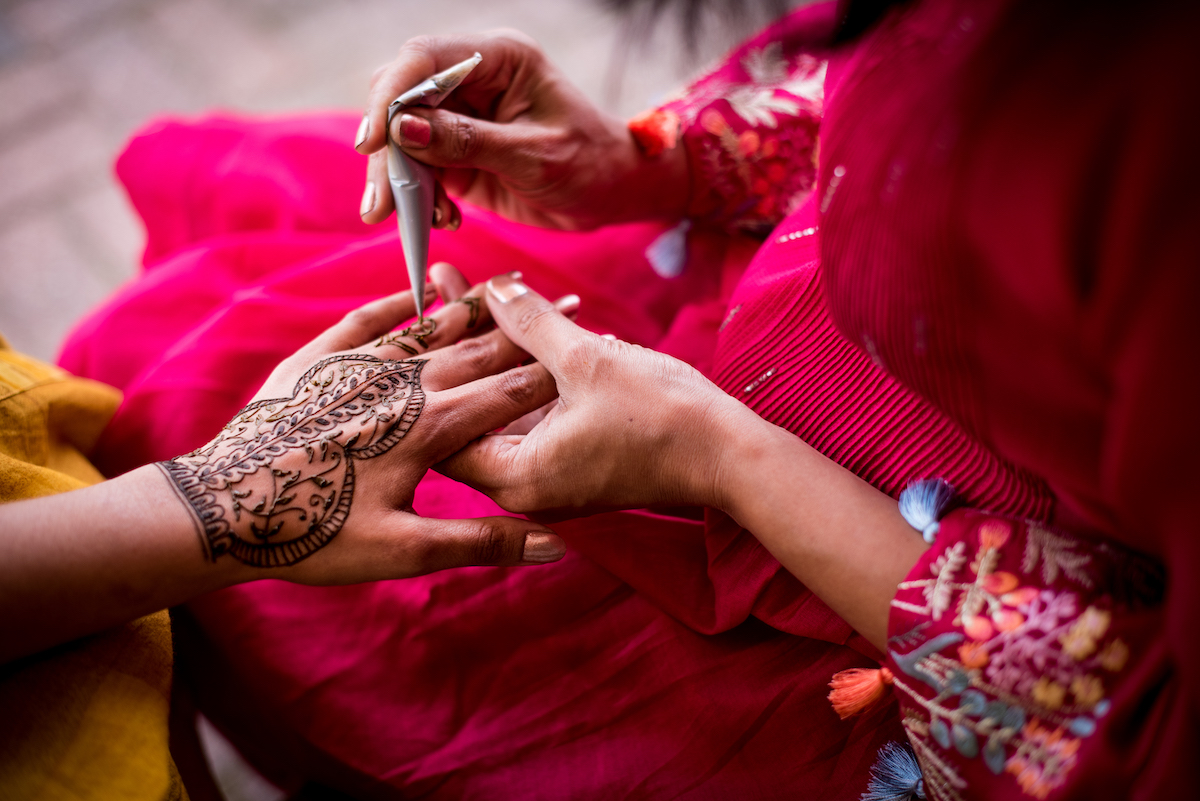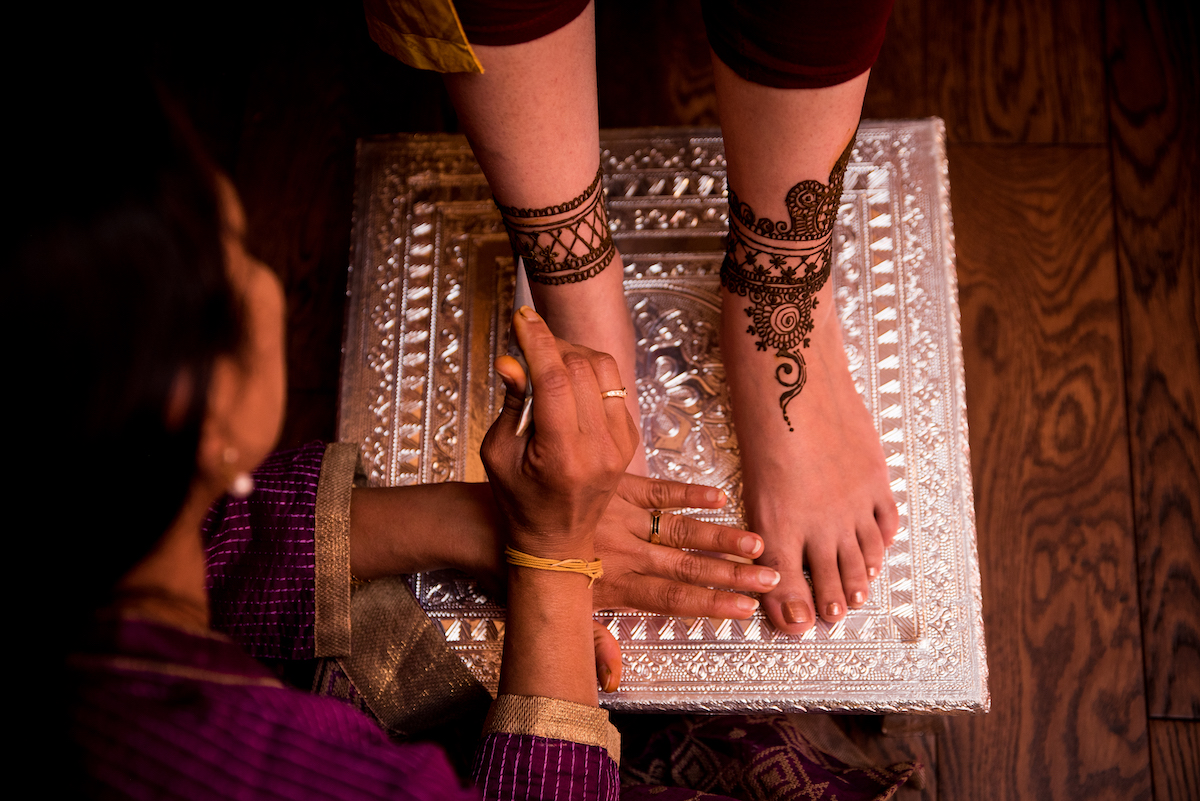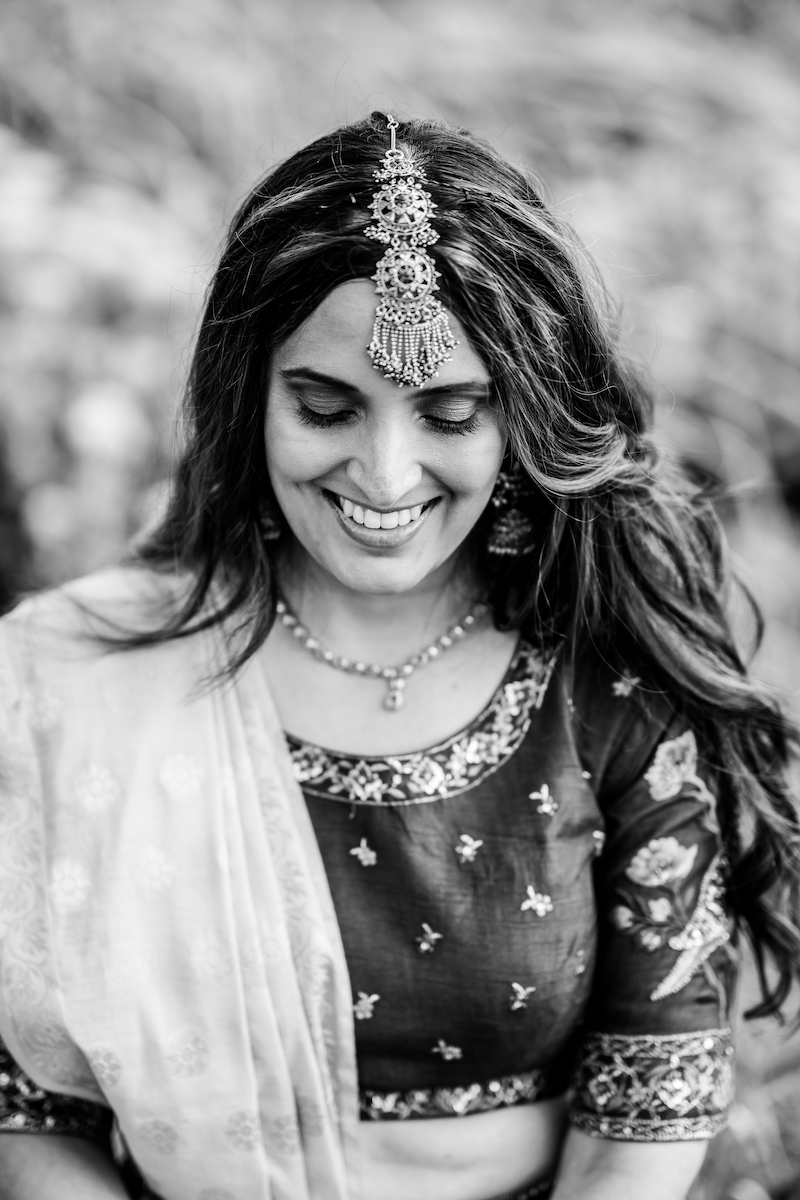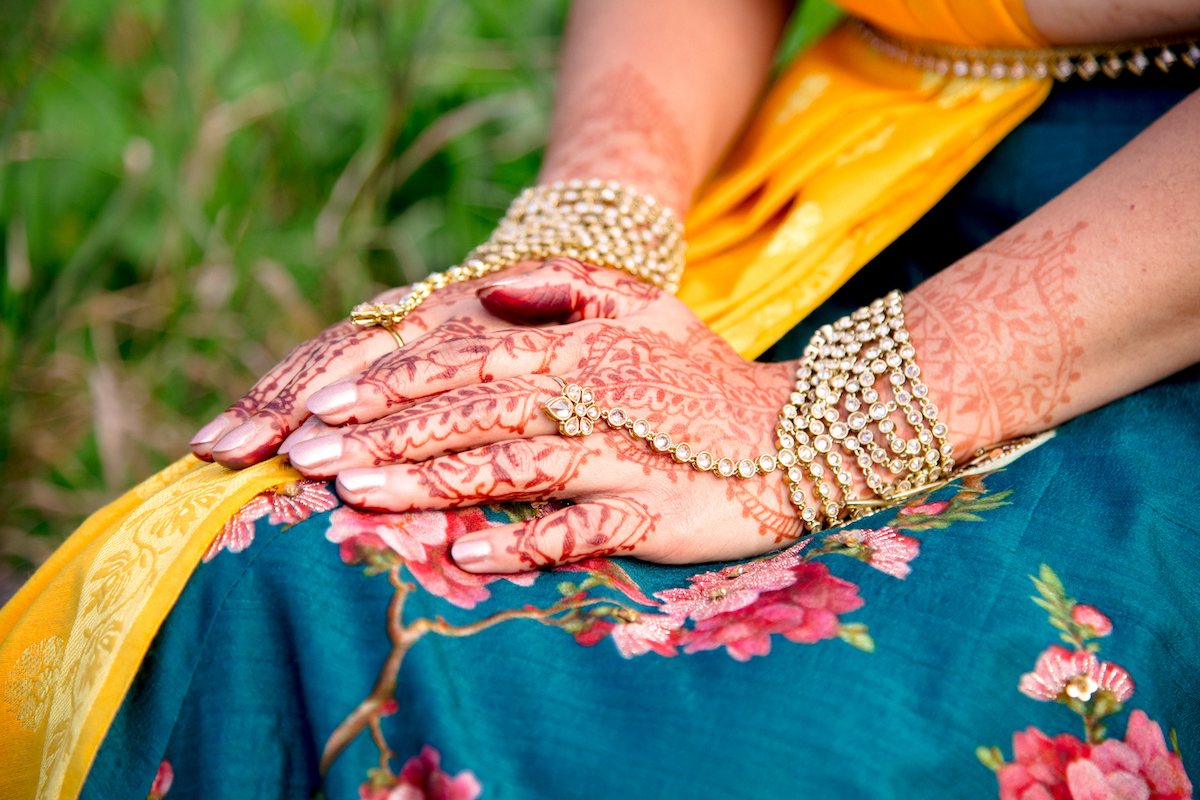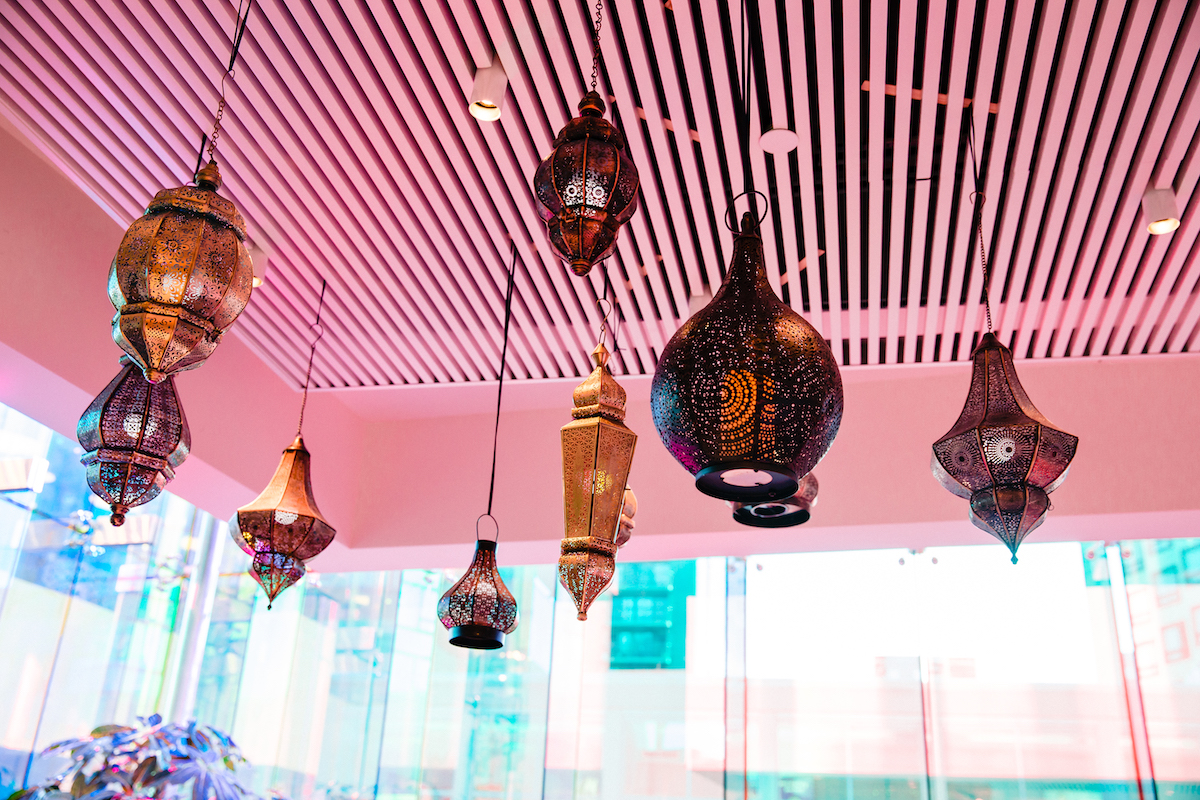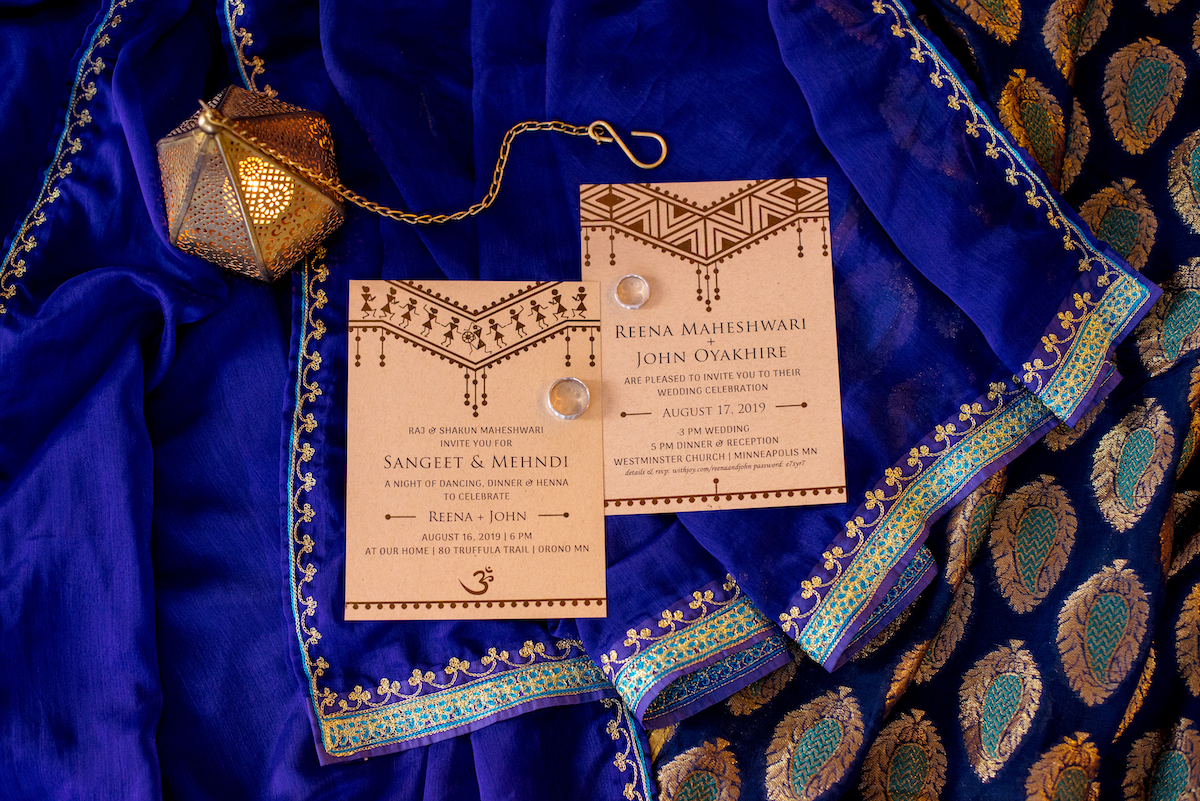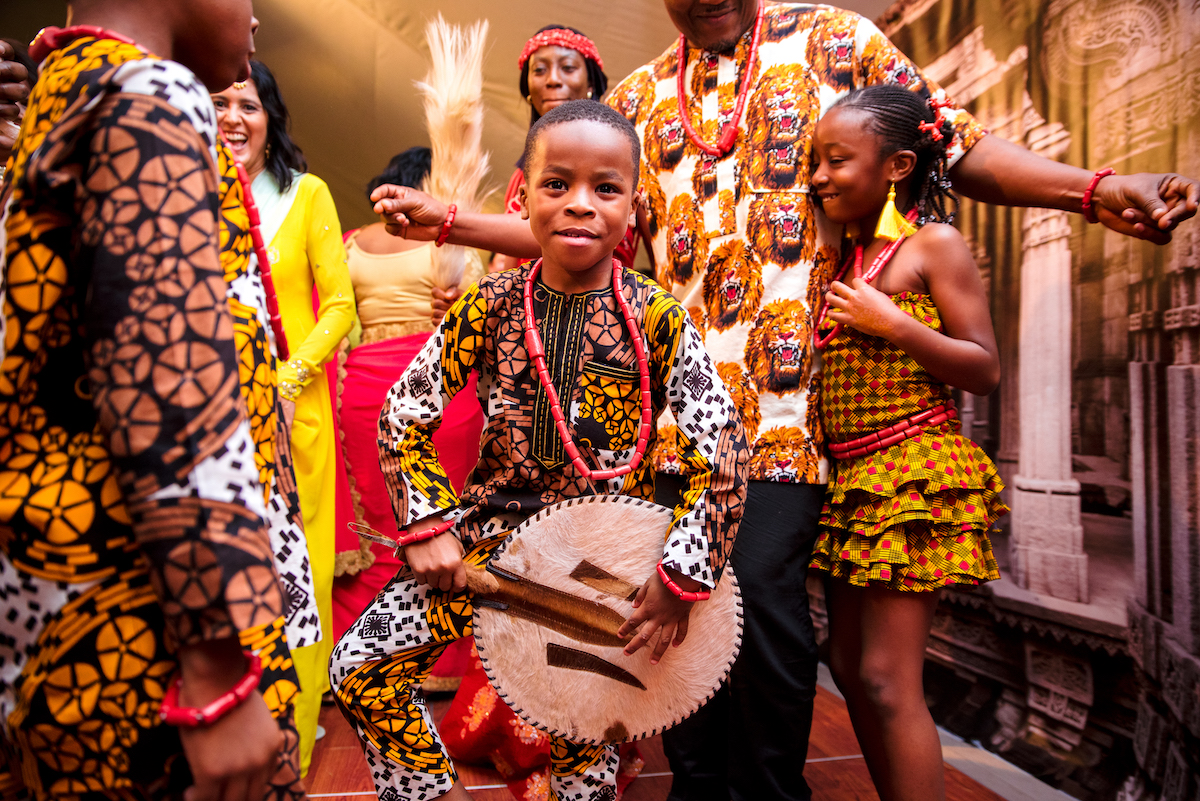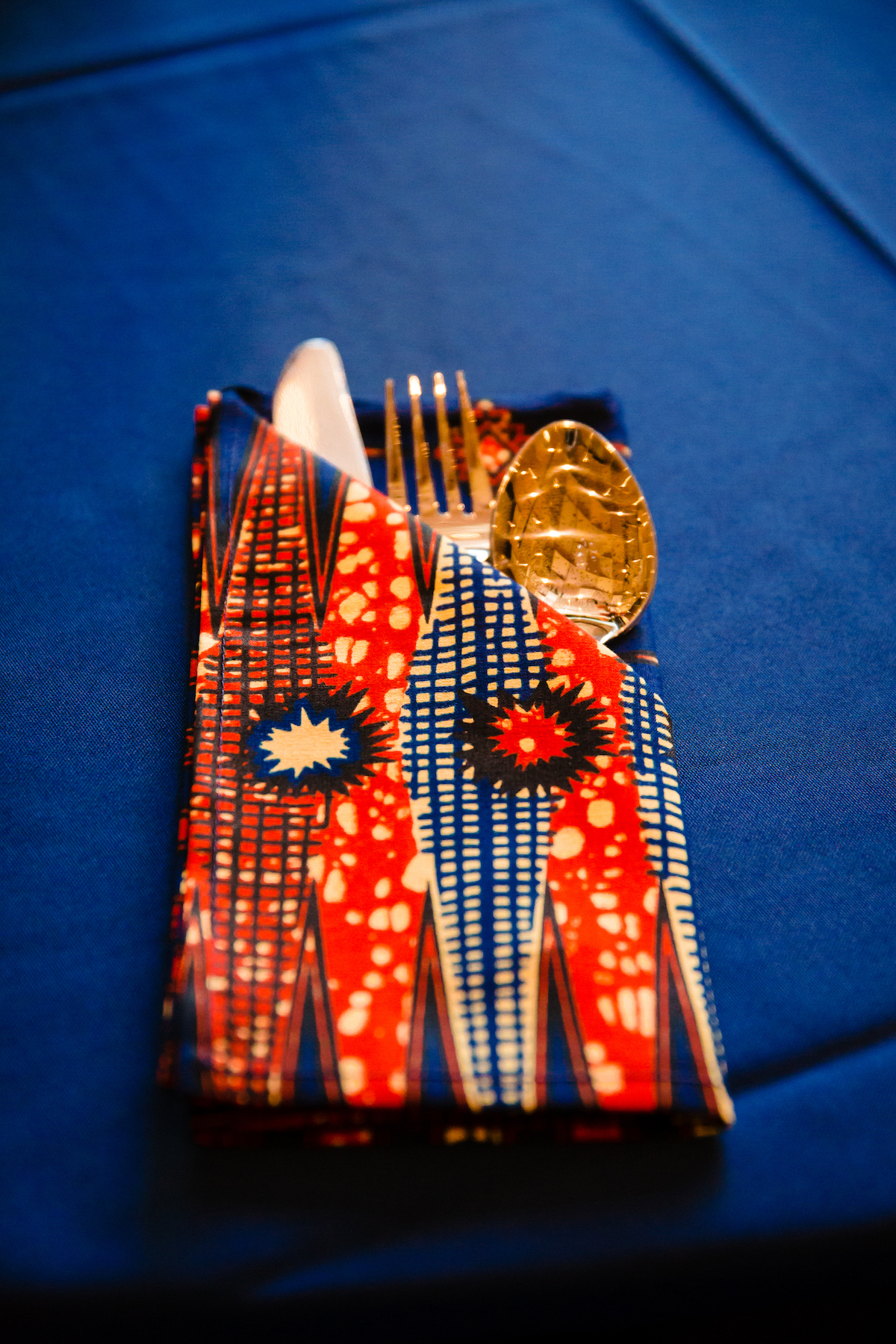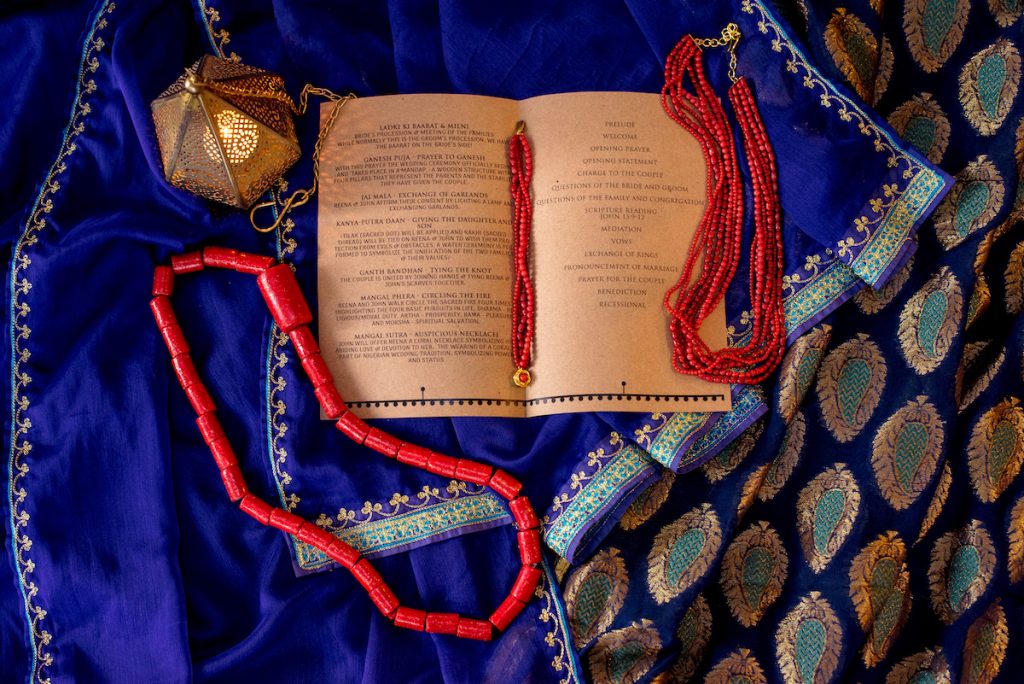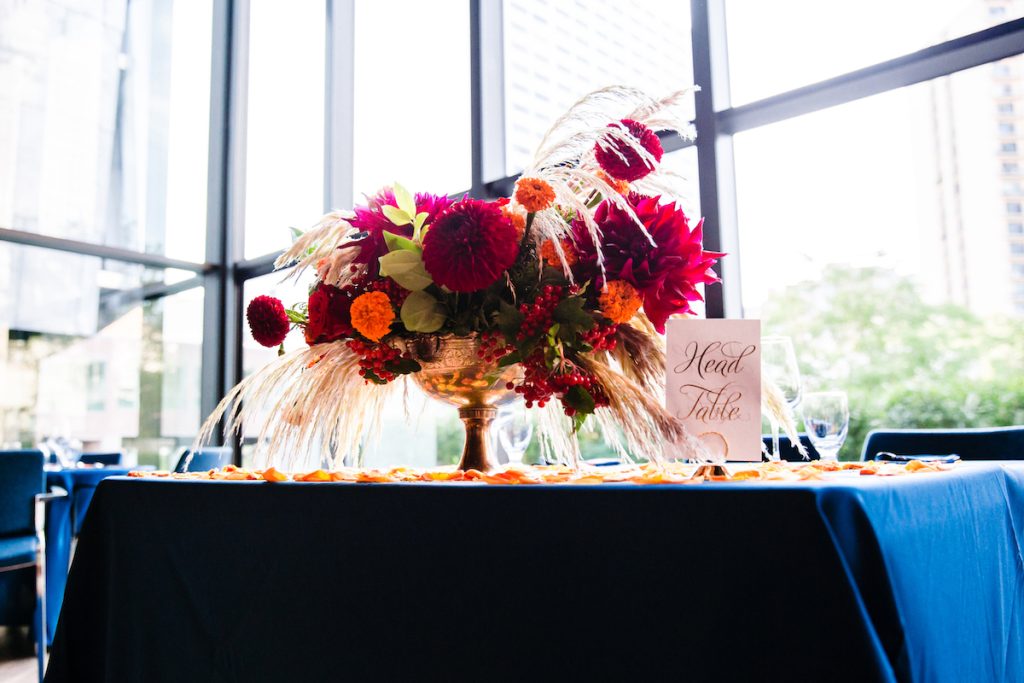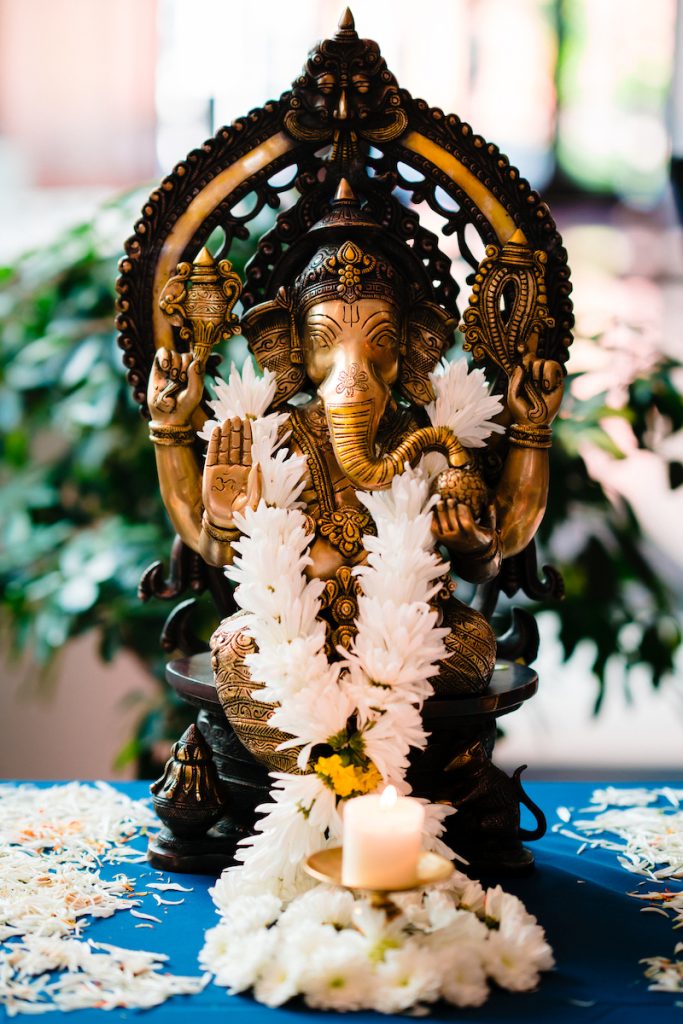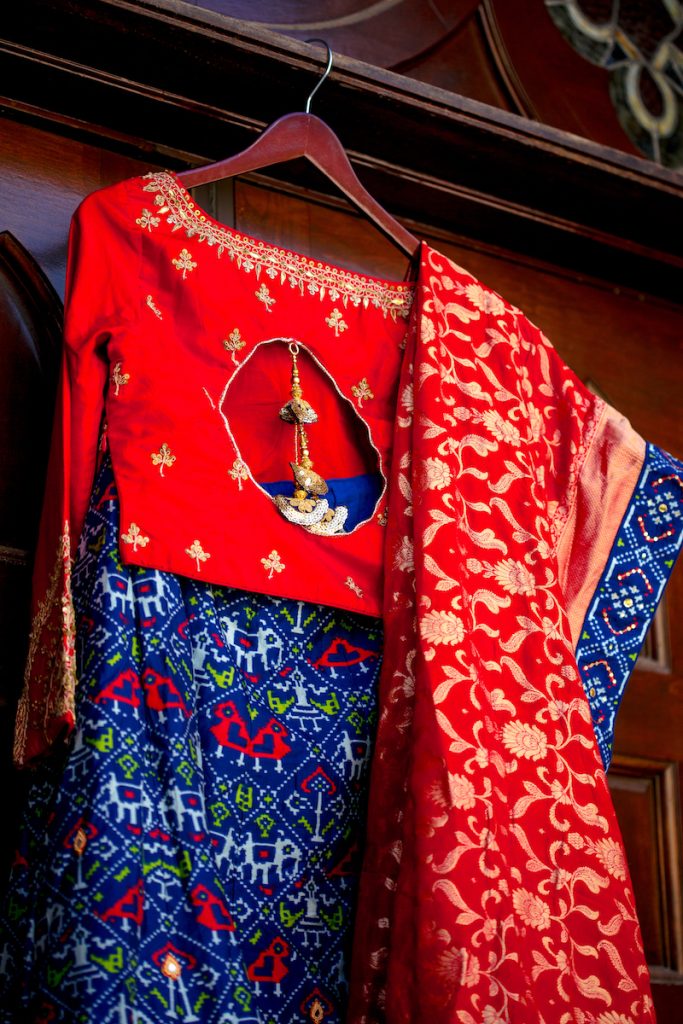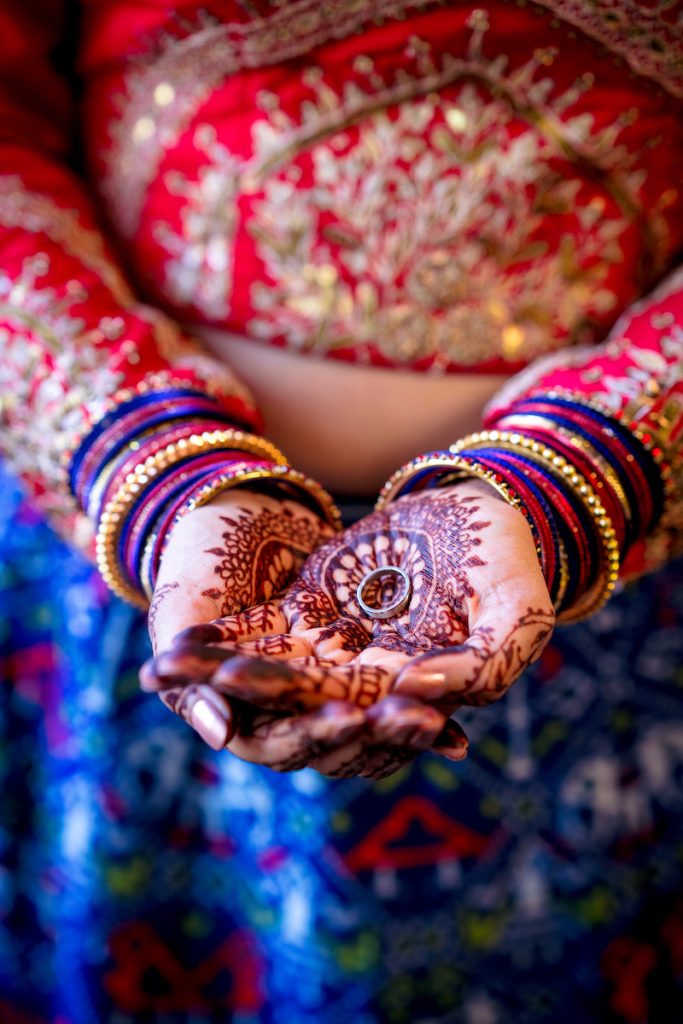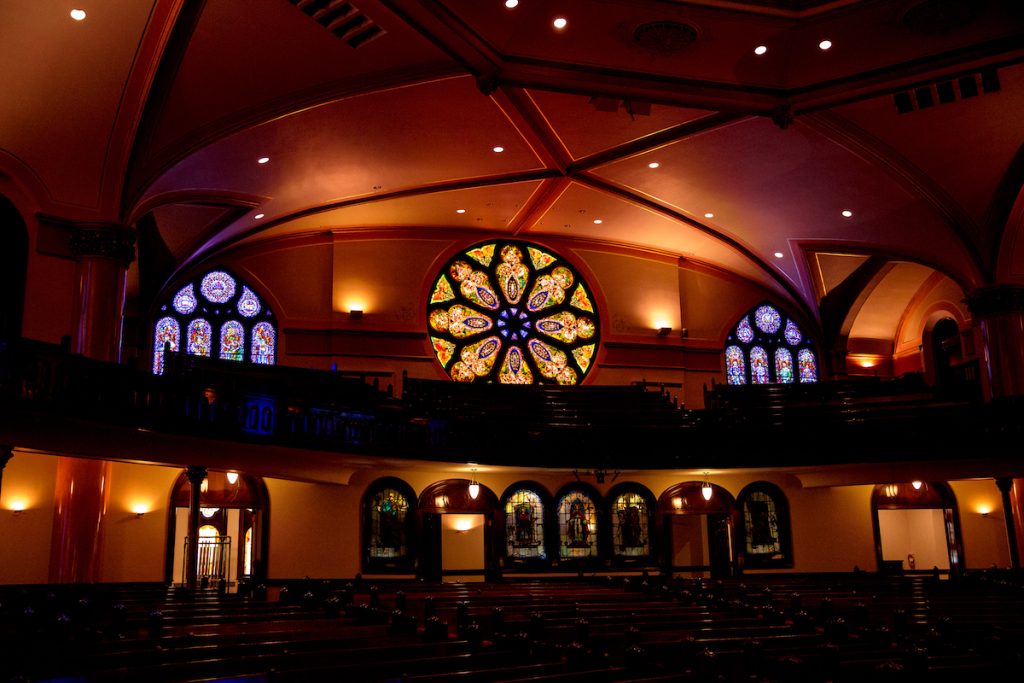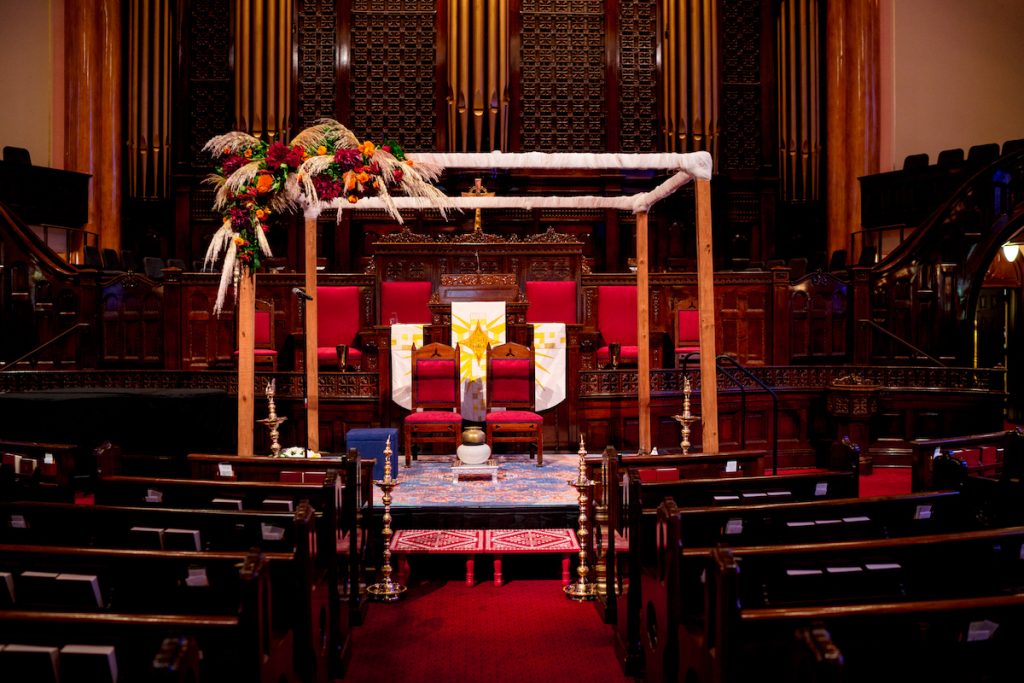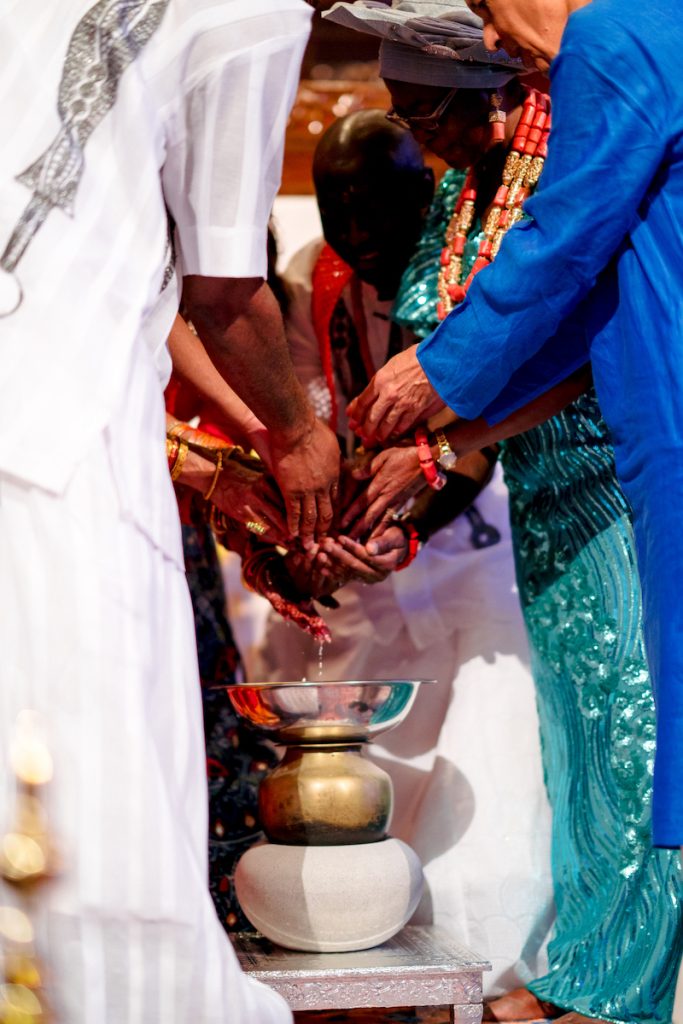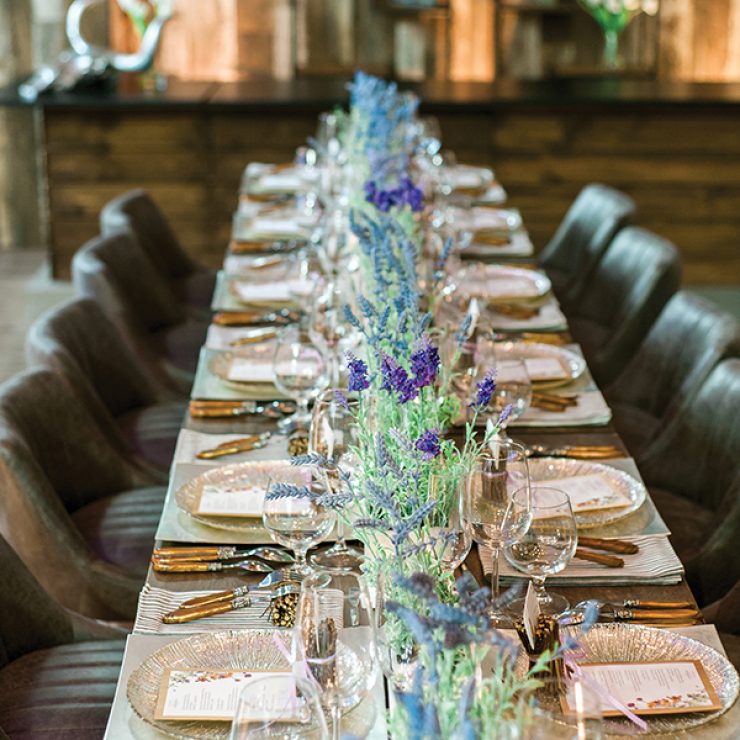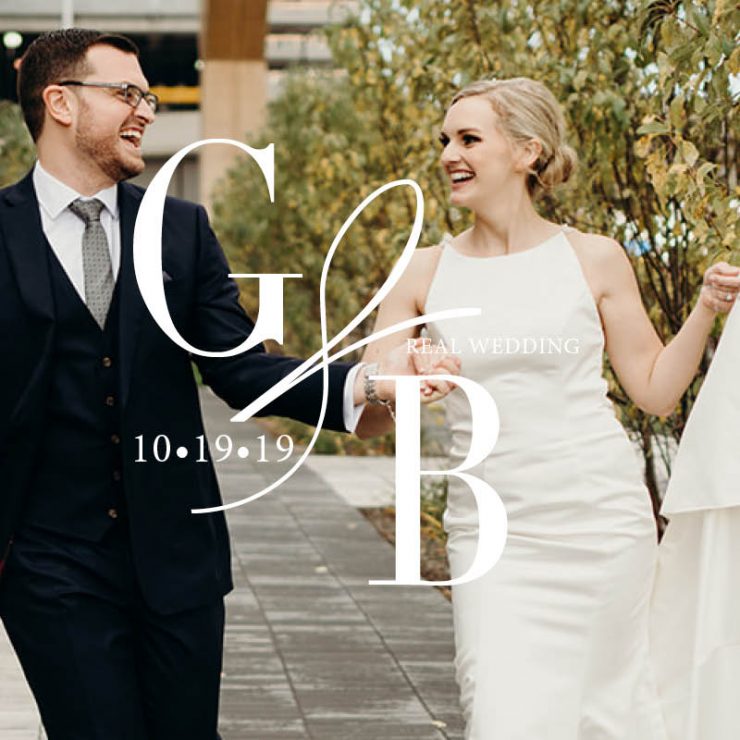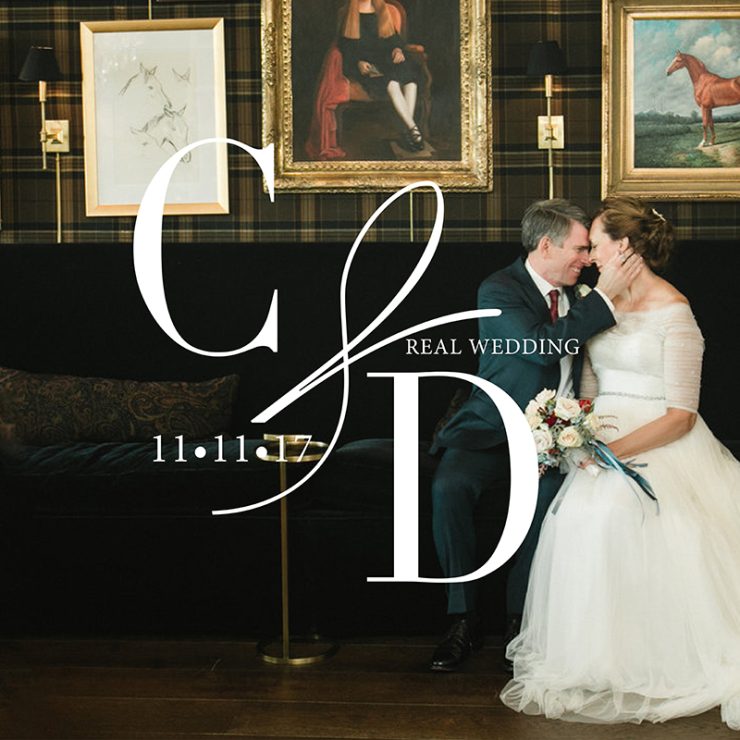Wedding Trends Look Book 2022: Heritage
Bold colors, authentic fashion, and the blending of traditions set the tone for this multicultural heritage wedding. From the food to the entertainment, the attire, and décor, each element was a mix of the couple’s own heritage stemming from their respective Indian and Nigerian roots. South Asian wedding celebrations often include events that span over several days and the parties were equal parts glamorous and traditional with endless details.
The first of many celebrations allowed guests to connect prior to the wedding day. In Hindu culture, it is customary to hold a mehndi ceremony the evening before the wedding day. Above, the bride has henna applied to her hands and feet during this time as her close friends and family surround and celebrate her. It is said that the deeper the tone of the henna, the more joy the couple will have in their marriage. The designs are ornamental and vary from bride to bride.
Significant color schemes, intentional fabrics, and bespoke outfits were seen throughout the weekend giving a luxury artisanal feel. Guests from around the world were delighted to see ethnic elements carefully placed amongst the design that came together to form a stunning, cohesive wedding.
Following the mehndi, guests were invited to the Sangeet where the couple’s families bonded over cross-cultural traditions. Here, Indian customs were shared between families with Bollywood dances and songs answered by an energetic Nigerian fashion show representing various ethnic groups of Nigeria. Fashion in bold colors is important at this event as the bride donned a dark green skirt that included bright yellows with a matching lehenga and the groom wore a coordinating kurta.
Guests would get their first glimpse of the wedding aesthetic through the stationery. The Sangeet invitation featured a design inspired by Warli art to represent an evening of music and dance. The wedding day invitation was a modern take on an Indian design with a geometric pattern and hanging flower strings.
Vivid navy, royal blue, orange, teal, and coral colors took center stage for the wedding day celebrations. In Nigerian weddings, coral plays a significant role as this tone is seen throughout the flowers, attire, décor, and jewelry, below. In Edo culture, coral beads are associated with royalty and symbolize wealth and power.
Reception tables were topped with culturally relevant and stylish pieces. Low brass pots held red rose petals adjacent to handmade napkins, at right. The fabric mirrored the extravagant fashion with Ankara print in navy and red.
Dishes from both cultures provided a unique culinary experience for guests. Bites included mango lassi, moi moi, chili paneer, fried plantains, and more. As an added twist, locally-foraged wine and cider were served for a local angle on an international affair.
The head table featured an asymmetrical centerpiece of fresh and dried flowers in a traditional Indian brass vase, below. Bright orange carnations peeked out from red roses, deep pink dahlias, greenery, and pampas grass.
Interfaith couples often hold two ceremonies to honor each other’s marriage customs. For this wedding, a Hindu and a Christian ceremony were held back to back while each wore attire from their respective cultures. At right, the bride wears a navy lehenga made of Ikat fabric and a red top with ornate gold embellishments. Red is customary for the Indian bride as it represents new beginnings, power, and prosperity. At the end of the ceremony, the bride is given a mangalsutra by the groom to symbolize the uniting of their souls, just as rings do in Western culture.
Photos by: Mariah Joy Photography

